I am new to JavaFX
I wrote this code however, I dont know how to Display the Menu Bar in all my Scenes. Also I would like to create/fill my scenes with the Layout in my HelloApplication (however thats another issue).
I have a controller, for setting the Stage and launching it. My MenuBar is in the class MenuLeiste, but I would like it to appear in my Credits class aswell. Im very sorry for the lack of comments and the Layout of this comment.
public class HelloApplication extends Application {
public class Main {
public static void main(String[] args) {
launch(args);
}
}
@Override
public void start(Stage primaryStage) throws Exception {
//set window as primaryStage
Stage window = primaryStage;
//Layout of MenuLeiste is put in l1 and setted as scene1
MenuLeiste l1 = new MenuLeiste();
//menuscene gets its objects fromsceneViewMenu
Scene menuscene = new Scene(l1.sceneViewMenu());
window.setScene(menuscene);
window.setHeight(600);
window.setWidth(800);
window.setTitle("Game Title");
window.show();
}
}
My MenuLeiste class
import javafx.scene.Scene;
import javafx.scene.control.Menu;
import javafx.scene.control.MenuBar;
import javafx.scene.control.MenuItem;
import javafx.scene.layout.VBox;
import javafx.stage.Stage;
public class MenuLeiste {
public VBox sceneViewMenu() {
MenuBar menuBar = new MenuBar();
VBox menuBox = new VBox(menuBar);
Menu dataMenu = new Menu("Data");
MenuItem exitItem = new MenuItem("Exit");
exitItem.setOnAction(e -> System.exit(0));
Menu extrasMenu = new Menu("Extras");
MenuItem creditsItem = new MenuItem("Credits");
creditsItem.setOnAction(e -> {
Credits c = new Credits();
Scene scene3 = new Scene(c.sceneView3());
Stage window = (Stage) menuBox.getScene().getWindow();
window.setScene(scene3);
});
extrasMenu.getItems().addAll(creditsItem);
dataMenu.getItems().addAll( exitItem);
menuBar.getMenus().addAll(dataMenu,extrasMenu);
//the scenes layout is saved in layout1
VBox layout1 = new VBox(20);
layout1.getChildren().addAll(menuBox);
return layout1;
}
}
My Credits Class
package view;
import javafx.scene.Scene;`
import javafx.scene.control.Button;
import javafx.scene.control.Label;
import javafx.scene.layout.VBox;
import javafx.stage.Stage;`
public class Credits {
public VBox sceneView3()
{
Label label = new Label("Thanks");
Button backButton = new Button("Back");
backButton.setOnAction(e -> {
MenuLeiste l1 = new MenuLeiste();
Scene menuscene = new Scene(l1.sceneViewMenu());
Stage window = (Stage) backButton.getScene().getWindow();
window.setScene(menuscene);
});
VBox layout1 = new VBox(20);
layout1.getChildren().addAll(label, backButton);
return layout1;
}
}

